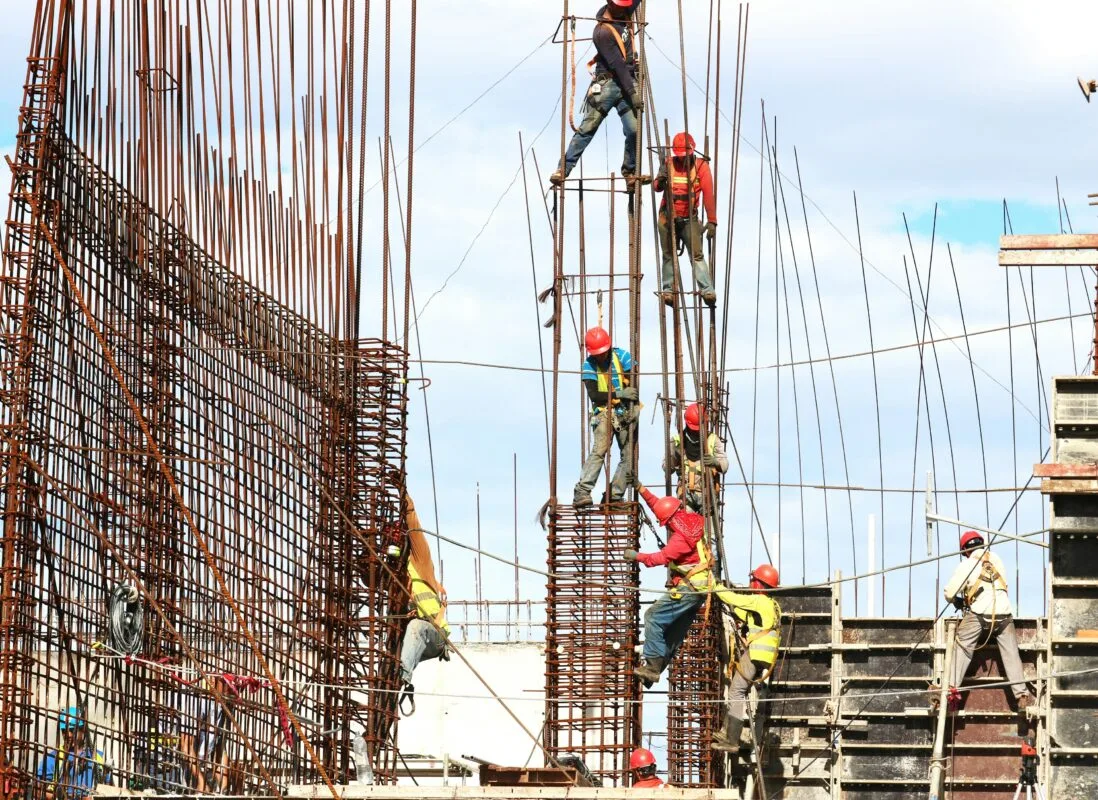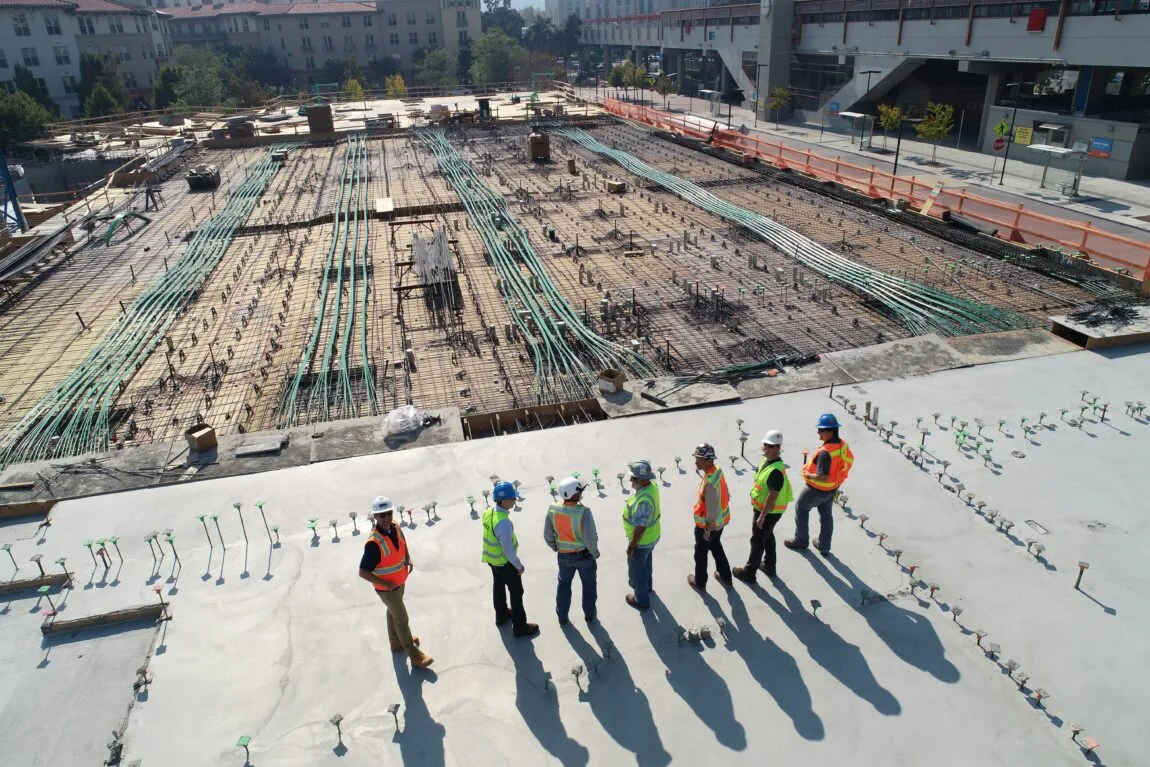Behind every successful construction project lies a robust contract. These legal agreements aren’t just paperwork—they’re the glue that holds projects together, defining responsibilities, managing expectations, and mitigating risks. We believe in empowering construction experts with knowledge.
Whether you’re negotiating a multi-million-dollar development or overseeing a local renovation, this construction contracts guide will provide you with the tools to draft, negotiate, and manage contracts with confidence. Let’s lay the groundwork for smoother, more efficient construction projects.
What is a construction contract?
A construction contract is a legally binding agreement between two or more parties outlining the terms and conditions of a construction project. It’s a document that serves as a blueprint for the entire project, outlining the rights, responsibilities, and obligations of each party (owner, contractor, and sometimes subcontractors and suppliers). These types of contracts define the following:
- Scope of work. Outlines the specific tasks of each party.
- Payment terms. Outlines the schedule and method of payment.
- Timelines. Outlines the project timeline, including milestones and deadlines.
- Warranty. Outlines the period during which the contractor is responsible for any issues.
- Liability. Outlines the extent to which each party is responsible for damages or losses.
For starters, a construction contract provides a clear understanding of the project’s scope and objectives, reducing the risk of misunderstandings and disputes. It also outlines the payment terms, ensuring that all parties are on the same page when it comes to financial arrangements. And, in the event of a dispute, a well-drafted construction contract can help resolve disputes quickly and efficiently.
Think of a construction contract as a roadmap, outlining scope of work, payment terms, and timeline.
Construction contracts protect everyone’s interests
Clear terms, precise scope definitions, and well-defined risk allocations are fundamental components of any successful construction project. These elements serve several critical purposes:
Clarity and alignment. Construction contracts ensure that all parties involved—owners, contractors, subcontractors, and suppliers—are aligned on project expectations, deliverables, and timelines. This clarity minimizes misunderstandings and reduces the likelihood of disputes during project execution.
Risk management. Whether it’s specifying insurance requirements, establishing safety protocols, or addressing unforeseen circumstances like delays or material shortages, these contracts provide a structured framework for managing responsibilities and liabilities throughout the project lifecycle.
Legal protection. Construction projects are inherently complex and can involve substantial investments in time, resources, and capital. A well-drafted contract provides legal protections for all parties involved. This protection includes mechanisms for dispute resolution, such as mediation, arbitration, or litigation.
Financial clarity. Contracts establish clear payment terms, including milestones, progress payments, and final payments upon project completion. This financial clarity helps maintain cash flow for contractors and subcontractors and assures owners that payments are linked to project milestones.
Project control and accountability. With defined scope definitions and performance standards, construction contracts enable effective project management and accountability among all project stakeholders. They outline the quality standards, materials to be used, and performance benchmarks.
Key terminology
Understanding the essential terms and concepts in a construction contract is crucial for ensuring that all parties involved are on the same page. Here are some terms that you should be familiar with:
| Term | Explanation |
| Indemnity | Indemnity refers to the obligation of one party to compensate another party for any losses or damages that may occur as a result of a specific event or action. E.g., indemnity may be used to protect the owner from liability for damages that occur on the project site. |
| Liquidated Damages | Predetermined amounts agreed upon in the contract to be paid by the party responsible for delays or breaches that may arise. They serve as a measure of compensation for the non-breaching party without the need to prove actual financial loss. |
| Scope of Work | An SOW defines what is expected of each party—the specific tasks, deliverables, and objectives that the contractor is obligated to complete under the contract. It includes details such as project milestones, quality standards, materials to be used, and deadlines. |
| Change Order Request (COR) | Change order requests are formal documents submitted to modify the original terms due to changes in project scope, design alterations, unforeseen conditions, or client requests. A COR must be approved by all parties before it can be implemented. |
| Addenda | Supplementary documents added to the original contract to clarify or modify specific terms, conditions, or requirements. They are used to address ambiguities, incorporate amendments, or provide additional details that were not included in the initial agreement. |
| Field order | Written directives issued during the project by the owner or contractor to authorize changes or extra work that were not originally included in the contract. These orders are typically used to address urgent issues, unforeseen conditions, or minor adjustments needed to keep the project on track. |
5 Types of Construction Contracts

Construction contracts vary based on project requirements, risk allocation, and financial arrangements.
Lump sum contracts
Lump sum contracts, also known as fixed-price contracts, establish a total contract price for all construction-related activities. These contracts are suitable when the scope of work is well-defined and unlikely to change significantly. The contractor agrees to complete the project for a specific price. Any cost overruns or savings are typically the contractor’s responsibility.
Time and materials contracts
Time and materials contracts involve billing the client based on the hours worked by the contractor’s team and the materials used. These contracts are flexible and suitable for projects where the scope of work is uncertain or subject to change. They provide transparency in costs but can pose risks related to project budgeting and timeline management if not carefully monitored.
Unit price contracts
Unit price contracts establish rates for specific units of work or materials, such as per square foot for flooring installation or per cubic yard for excavation. These contracts are beneficial for repetitive tasks or projects where quantities may vary. Unit prices are predetermined, providing clarity in cost estimation and budgeting. Owners pay based on actual quantities installed or delivered.
Guaranteed maximum price (GMP) contracts
Guaranteed Maximum Price (GMP) contracts set a cap on the total price that the contractor will charge, ensuring cost certainty for the owner while allowing flexibility for changes within the agreed scope of work. If the actual costs are lower than the maximum price, the savings may be shared between the owner and contractor based on the contract terms.
Cost-plus contracts
Cost-plus contracts reimburse the contractor for all direct costs. These contracts are suitable for projects with evolving designs, uncertain scopes, or where high-quality materials and craftsmanship are prioritized over strict budget controls. Cost-plus contracts require transparency in cost reporting and management to ensure fair reimbursement and effective project oversight.
Mastering construction contracts for project success
From the predictability of lump sum contracts to the flexibility of time and materials contracts, each type serves a unique purpose in aligning project expectations and managing risks. Unit price contracts offer transparency in cost allocation, while guaranteed maximum price (GMP) contracts provide peace of mind with capped expenditures. Finally, cost-plus contracts foster collaboration and high-quality outcomes.
Adopting best practices—defined scopes, meticulous terms, and proactive risk management—empowers professionals in the construction industry to navigate challenges with confidence. Tools like AI contract review software from Superlegal further streamline construction agreements. With the right contract in place, you can avoid costly delays and disputes. So, next time you’re considering a construction project, make sure to choose the right type of contract for your needs.







By entering your email, you agree to our Terms & Conditions and Privacy Policy.